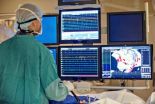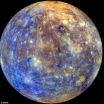(Press-News.org) An innovative 'trigeneration' system fuelled entirely by raw plant oils could have great potential for isolated homes and businesses operating outside grid systems both in the UK and abroad.
Developed by a consortium led by Newcastle University and funded by the Engineering and Physical Sciences Research Council (EPSRC) through the RCUK Energy Programme, the small-scale combined cooling, heat and power system has been designed to provide dependable electricity without the need for a mains connection.
Ideally suited for small-holdings and businesses, and particularly applications in the developing world, the waste heat that is produced by the system is used for cooling and heating in order to recover the maximum amount of energy.
At the same time, the team have incorporated advanced electrical storage into the system to make it even more efficient and more able to cope with the daily fluctuating demand for electricity.
The consortium also included researchers from University of Leeds, University of Ulster, and three Chinese universities.
"The challenge," explains Professor Tony Roskilly, of Newcastle University, "was to design a system that could simultaneously satisfy the more predictable needs for heating and hot water, as well as the wildly varying demand for electricity in a small dwelling."
"Our solution was to incorporate advanced electrical storage into the system, both batteries and the latest supercapacitors, combined with innovative system control."
Combined Heat and Power units have been used by large businesses for many years, producing electricity from a generator, and running heating off the engine cooling system and exhausts. But on small premises, where turning on an appliance such as a pump or a kettle can increase the electrical load several fold in a matter of seconds, attempts to match the competing demands of electricity and heat can seriously undermine the units' efficiency.
Before designing the system, the team logged the minute-by-minute energy use in households – previous studies have lost important detail by averaging demand over much longer timescales.
In a typical UK house, for example, heating demand is largely stable when hot water and space heating is required. In contrast, electricity consumption can hover around a hundred watts or so most of the day, but reach peaks of 7 kilowatts or more in a matter of seconds, and for just a minute or two.
The solution developed by the Newcastle-led consortium is a generator that runs constantly at high efficiency, coupled to the electrical storage system so that it can easily match sharp peaks in electrical demand when required. Waste heat is captured and stored via hot water tanks for heating and hot water needs. Cooling for refrigeration or air conditioning via an absorption chiller can also be run off the waste heat.
"Energy storage unlocks the key to the most efficient use of the trigeneration system," says Professor Roskilly.
To make the system even greener, and more appropriate for the developing world, the team has also shown the system can be powered by biofuels.
"We wanted to avoid running the trigeneration system using biodiesel or other highly-processed fuels from raw materials," says Professor Roskilly. "So instead, we developed a system for using the oils obtained from pressing crop seeds, like those from jatropha and croton.
"These crops can grow in harsh environments and on poor-quality land and so could be well-suited to providing fuel in developing countries, as cultivating them would not adversely affect food production.
"The potential demand for this technology in such countries is very large."
In a follow-up study funded by the EPSRC, DFiD and DECC, Tony Roskilly is exploring how the trigeneration system can be used on small farms in the developing world to refrigerate and process food crops, to reduce post-harvest losses.
The Newcastle team are currently examining the long-term performance of the system running on 'raw' plant oils studies, and are in discussion with manufacturers with a view to commercialising the design.
INFORMATION:
Notes for Editors
The three-and-a-half-year project 'Biofuel Microgeneration with Cryogenic Energy Storage' has received total EPSRC funding of just over £1.13 million.
A domestic-scale tri-generation system of this type would be rated between around 6kW and 9kW electricity, equivalent to the amount of power needed if the following domestic appliances are switched on at the same time: lights, TV, fridge freezer, kettle, microwave, vacuum cleaner, washing machine, and dishwasher.
Energy storage is based on water heat storage and a hybrid battery and super-capacitor electricity storage system. Also research on a cryogenic energy storage system has been patented by Leeds University.
The Engineering and Physical Sciences Research Council (EPSRC) is the UK's main agency for funding research in engineering and physical sciences. EPSRC invests around £800m a year in research and postgraduate training, to help the nation handle the next generation of technological change. The areas covered range from information technology to structural engineering, and mathematics to materials science. This research forms the basis for future economic development in the UK and improvements for everyone's health, lifestyle and culture. EPSRC works alongside other Research Councils with responsibility for other areas of research. The Research Councils work collectively on issues of common concern via research Councils UK.
The Research Councils UK (RCUK) Energy Programme
The Research Councils UK Energy Programme led by EPSRC aims to position the UK to meet its energy and environmental targets and policy goals through world-class research and training. The Energy programme is investing more than £625 million in research and skills to pioneer a low carbon future. This builds on an investment of £839 million over the past eight years.
The Energy Programme brings together the work of EPSRC and that of the Biotechnology and Biological Sciences Research Council (BBSRC), the Economic and Social Research Council (ESRC), the Natural Environment Research Council (NERC), and the Science and Technology Facilities Council (STFC).
Newcastle University
Newcastle University is a Russell Group University
We rank in the top 20 of UK universities in The Sunday Times 2013 University Guide and in the 2015 Complete University Guide
Amongst our peers Newcastle is:
5th in the UK for graduates into jobs (HESA 2011-12)
10th in the UK for student satisfaction
Ranked 8th in the UK for Medical research power
Engineering and Physical Sciences Research Council (EPSRC) top 20 strategic partner
95% of our students are in a job or further training within six months of graduating
We have a world-class reputation for research excellence and are spearheading three major societal challenges that have a significant impact on global society. These themes are: Ageing, Sustainability, and Social Renewal
Newcastle University is the first UK university to establish a fully owned international branch campus for medicine at its NUMed Campus in Malaysia which opened in 2011
We get a 92% satisfaction rating from our international students (ISB 2013)
For more information, contact:
Professor Tony Roskilly, Director, Sir Joseph Swan Centre for Energy Research, Newcastle University, E-mail: tony.roskilly@ncl.ac.uk Mobile details on request from EPSRC Press Office.
Images are available from the EPSRC Press Office. Contact: The EPSRC Press Office on 01793 444404, E-mail: pressoffice@epsrc.ac.uk
Image 1: Professor Tony Roskilly, Director, Sir Joseph Swan Centre for Energy Research,
Newcastle University (Image Credit: Mike Urwin, Newcastle University)
Image 2: Trigeneration research laboratory at Newcastle University
(Image Credit: Mike Urwin, Newcastle University)
Image 3: Professor Tony Roskilly with some biofuel in his trigeneration lab
(Image Credit: Newcastle University)
All-in-one energy system offers greener power for off-grid homes, farms
2014-07-30
ELSE PRESS RELEASES FROM THIS DATE:
Toward a home test for detecting potentially dangerous levels of caffeine
2014-07-30
The shocking news of an Ohio teen who died of a caffeine overdose in May highlighted the potential dangers of the normally well-tolerated and mass-consumed substance. To help prevent serious health problems that can arise from consuming too much caffeine, scientists are reporting progress toward a rapid, at-home test to detect even low levels of the stimulant in most beverages and even breast milk. Their report appears in ACS' Journal of Agricultural and Food Chemistry.
Mani Subramanian and colleagues note that caffeine's popularity as a "pick-me-up" has led to it being ...
Hope for more accurate diagnosis of memory problems
2014-07-30
More accurate tests could be created to diagnose diseases such as Alzheimer's or memory problems stemming from head injuries, leading to earlier intervention, according to new findings from the University of East Anglia.
The research involved investigating the components of memory using a combination of tests and neuroimaging – a method that could be used to create a diagnostic tool for distinguishing between different types of dementia, memory damage from stroke or forms of amnesia caused by head trauma.
Dr Louis Renoult, a lecturer in UEA's School of Psychology, said: ...
Exploring 3-D printing to make organs for transplants
2014-07-30
Printing whole new organs for transplants sounds like something out of a sci-fi movie, but the real-life budding technology could one day make actual kidneys, livers, hearts and other organs for patients who desperately need them. In the ACS journal Langmuir, scientists are reporting new understanding about the dynamics of 3-D bioprinting that takes them a step closer to realizing their goal of making working tissues and organs on-demand.
Yong Huang and colleagues note that this idea of producing tissues and organs, or biofabricating, has the potential to address the ...
Nature inspires a greener way to make colorful plastics
2014-07-30
Long before humans figured out how to create colors, nature had already perfected the process — think stunning, bright butterfly wings of many different hues, for example. Now scientists are tapping into those secrets to develop a more environmentally friendly way to make colored plastics. Their paper on using structure — or the shapes and architectures of materials — rather than dyes, to produce color appears in the ACS journal Nano Letters.
N. Asger Mortensen, Anders Kristensen and colleagues point out that currently, plastic manufacturers add pigments to their products. ...
Fighting over proposed changes to food labels
2014-07-30
To help Americans make better decisions about what they eat, the Food and Drug Administration (FDA) earlier this year proposed significant changes to the Nutrition Facts label found on nearly every food product in the U.S. An article in Chemical & Engineering News (C&EN), the weekly news magazine of the American Chemical Society, explains the suggested updates — and the fight that has ensued.
Britt Erickson, a senior editor at C&EN, points out that while the Nutrition Facts label has remained largely the same for two decades, nutrition science has not — and neither have ...
Brainwaves can predict audience reaction
2014-07-30
Media and marketing experts have long sought a reliable method of forecasting responses from the general population to future products and messages. According to a study conducted at The City College of New York, it appears that the brain responses of just a few individuals are a remarkably strong predictor.
By analyzing the brainwaves of 16 individuals as they watched mainstream television content, researchers were able to accurately predict the preferences of large TV audiences, up to 90 % in the case of Super Bowl commercials. The findings appear in a paper entitled, ...
Brazilian researchers identify RNA that regulates cell death
2014-07-30
Researchers from the University of São Paulo (USP) have identified an RNA known as INXS that, although containing no instructions for the production of a protein, modulates the action of an important gene in the process of apoptosis, or programmed cell death.
According to Sergio Verjovski-Almeida, professor at the USP Chemistry Institute and coordinator of a research funded by São Paulo Research Foundation (FAPESP), INXS expression is generally diminished in cancer cells, and methods that are capable of stimulating the production of this non-coding RNA can be used to ...
Scientists caution against exploitation of deep ocean
2014-07-30
CORVALLIS, Ore. – The world's oceans are vast and deep, yet rapidly advancing technology and the quest for extracting resources from previously unreachable depths is beginning to put the deep seas on the cusp of peril, an international team of scientists warned this week.
In an analysis in Biogeosciences, which is published by the European Geosciences Union, the researchers outline "services" or benefits provided by the deep ocean to society. Yet using these services, now and in the future, is likely to make a significant impact on that habitat and what it ultimately ...
Ablation increases survival for adults with atrial fibrillation
2014-07-30
Ann Arbor, Mich. -- Adults who undergo a minimally invasive technique to treat atrial fibrillation are significantly less likely to die from a heart attack or heart failure, according to a long-term study by the University of Michigan Frankel Cardiovascular Center.
More than 4 million people have atrial fibrillation, an age-related heart rhythm disorder that can cause a fluttering sensation in the chest and impair the heart's ability to pump blood.
The study published in Heart Rhythm shows cardiovascular mortality dropped by 60 percent among adults who had their normal ...
Mercury's magnetic field tells scientists how its interior is different from Earth's
2014-07-30
Earth and Mercury are both rocky planets with iron cores, but Mercury's interior differs from Earth's in a way that explains why the planet has such a bizarre magnetic field, UCLA planetary physicists and colleagues report.
Measurements from NASA's Messenger spacecraft have revealed that Mercury's magnetic field is approximately three times stronger at its northern hemisphere than its southern one. In the current research, scientists led by Hao Cao, a UCLA postdoctoral scholar working in the laboratory of Christopher T. Russell, created a model to show how the dynamics ...


